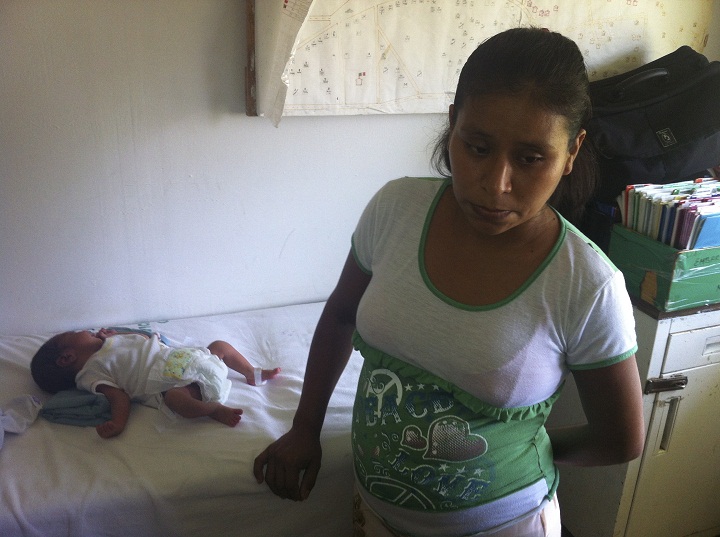MEXICO CITY – An indigenous woman squats in pain after giving birth, her newborn still bound by the umbilical cord and lying on the ground. It’s a photograph that horrified Mexicans because of where it took place (Warning: graphic image): the lawn outside a medical clinic where the woman had been denied help, and it struck a nerve in a country where inequity is still pervasive.

The government of the southern state of Oaxaca announced Wednesday that it has suspended the health centre’s director, Dr. Adrian Cruz, while officials conduct state and federal investigations into the Oct. 2 incident.
The mother, Irma Lopez, 29, told The Associated Press that she and her husband were turned away from the health centre by a nurse who said she was only eight months pregnant and “still not ready” to deliver.
The photo is giving visibility to a wider structural problem that occurs within indigenous communities: Women are not receiving proper care. They are not being offered quality health services, not even a humane treatment.
The nurse told her to go outside and walk, and said a doctor could check her in the morning, Lopez said. But an hour and a half later, her water broke, and Lopez gave birth to a son, her third child, while grabbing the wall of a house next to the clinic.
“I didn’t want to deliver like this. It was so ugly and with so much pain,” she said, adding she was alone for the birth because her husband was trying to persuade the nurse to call for help.
A witness took the photo and gave it to a news reporter. It ran in several national newspapers, including the full front page of a tabloid, and was widely circulated on the Internet.
The case illustrated the shortcomings of maternal care in Mexico, where hundreds of women still die during or right after pregnancy. It also pointed to still persistent discrimination against Mexico’s indigenous people persists.
“The photo is giving visibility to a wider structural problem that occurs within indigenous communities: Women are not receiving proper care. They are not being offered quality health services, not even a humane treatment,” said Mayra Morales, Oaxaca’s representative for the national Network for Sexual and Reproductive Rights.
Lopez, who is of Mazatec ethnicity, said she and her husband walked an hour to the clinic from the family’s one-bedroom hut in the mountains of northern Oaxaca. It would have taken them longer to get to the nearest highway to catch a ride to a hospital. She said that from the births of her two previous children, she knew she didn’t have time for that.
The federal Health Department said this week that it has sent staff to investigate what happened at the Rural Health Center of the village of San Felipe Jalapa de Diaz. The National Human Rights Commission also began an investigation after seeing news reports.
Nearly one in five women in the state of Oaxaca gave birth in a place that is not a hospital or a clinic in 2011, according to Mexico’s census. Health officials have urged women to go to clinics to deliver their babies, but many women say the operating hours of the rural centres are limited and staffs small. A receptionist at the Rural Health Center told the AP that the doctor in charge was not available to comment about the case.
Although some have praised Mexico for improving its maternal health care, the mortality rate still stands at about 50 deaths per 100,000 births, according to the World Health Organization, similar to Libya, Barbados and Kazakhstan. The U.S. rate is 16 per 100,000.
Oaxaca is one of Mexico’s poorest, most rural states and many women have died of hemorrhaging or preeclampsia, a condition causing high blood pressure and possible kidney or liver failure. The Mexican states with the highest indigenous population have the highest rates of maternal deaths, by a wide margin.
Lopez was taken in by the clinic after giving birth and discharged the same day with prescriptions for medications and products that cost her about $30, she said. Health officials say she and her baby were in good health.
She said that poverty-stricken villagers are used to being forgotten by Mexico’s health care system and left to fend off for themselves.
“I am naming him Salvador,” said Lopez, a name that means “Savior” in English. “He really saved himself.”




Comments